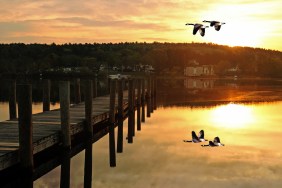 When the conditions call for it, the ability to effectively sight fish is a valuable asset to have on the water. Earlier this week we took a look at some helpful hints for when you’re sight fishing for smallmouth bass. Today, we’ll explore some hints to help boost your sight fishing prowess to make your fishing skills more well-rounded.
When the conditions call for it, the ability to effectively sight fish is a valuable asset to have on the water. Earlier this week we took a look at some helpful hints for when you’re sight fishing for smallmouth bass. Today, we’ll explore some hints to help boost your sight fishing prowess to make your fishing skills more well-rounded.
It’s common knowledge that sight fishing typically means clearer water. However, when assessing the waters around you, try to look for locations where it’s clear, but not too clear. Obviously, the ability to see into the water is necessary for sight fishing, and clear water affords you a good view, but it also does the same for the fish. This means that your movements, misplaced casts, and sub-par presentations can spook the fish during their unobstructed view in the water. I personally prefer lightly stained water, as it lowers the chance of my presence being noticed while still giving me the needed clarity to locate fish.
As always, weather conditions will play an important role in your sight fishing. Take advantage of the mornings and evenings on sunny days to achieve great results. However, don’t completely discount overcast days. Some cloud cover reduces glare on the water and yo’ll be surprised at how much you can still see even with clouds above you.
One last thing to remember is not all fish are suitable for sight fishing. You’ll want to keep in mind that species that primarily reside in shallow waters are ideal, such as largemouth and smallmouth bass, gar, northern pike, crappie, and bluegill. Other species—walleye, for example—just don’t situate in waters where sight fishing is used.
The tips outlined today will help get you started on fine tuning your sight fishing skills. Be sure to return later this week for a look at some of the best tactics and lures you’ll want to use when you’re sight fishing.








